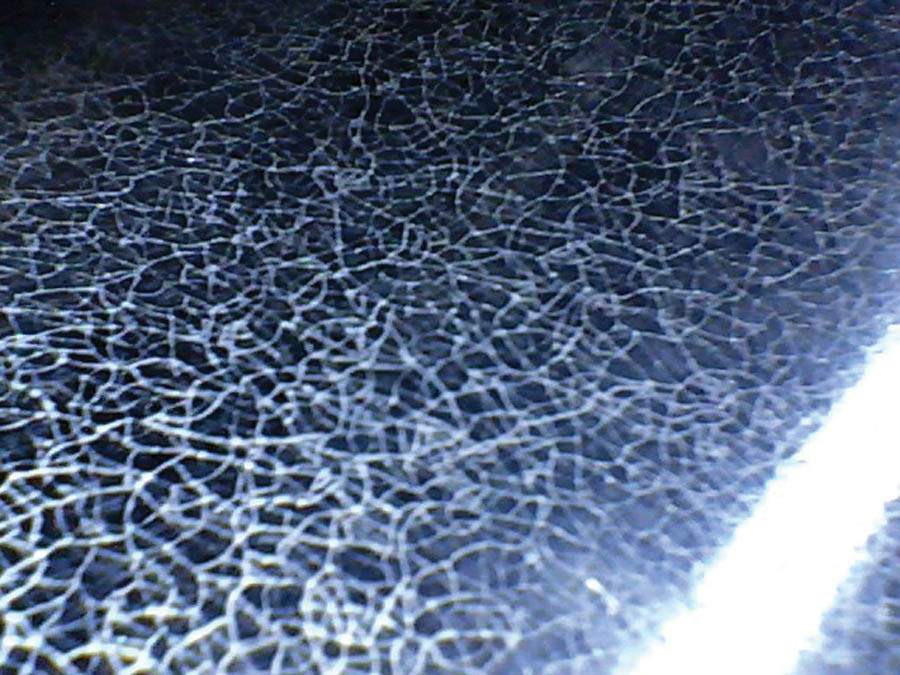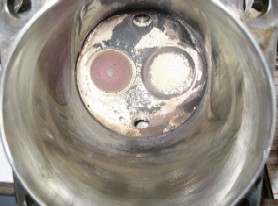Any ideas or input on these?


You are using an out of date browser. It may not display this or other websites correctly.
You should upgrade or use an alternative browser.
You should upgrade or use an alternative browser.
Dimpled cylinders
- Thread starter Taildragger
- Start date
Dimples make golf balls fly faster by reducing drag, so it must be for making the piston reciprocate faster, right? something like that.
I honestly have no idea. Maybe it's a spot for holding oil? I don't know what that is but it doesn't look like an automotive engine, so auto emission rules don't apply. Looks air cooled? might be to increase oiling under high temperature conditions? reduce piston seizing under extreme temperatures?
Big cylinder? is that for aircraft?
I honestly have no idea. Maybe it's a spot for holding oil? I don't know what that is but it doesn't look like an automotive engine, so auto emission rules don't apply. Looks air cooled? might be to increase oiling under high temperature conditions? reduce piston seizing under extreme temperatures?
Big cylinder? is that for aircraft?
Old Porsche 356 used to use dimpled cylinders to retain oil.
I honestly have no idea. Maybe it's a spot for holding oil? I don't know what that is but it doesn't look like an automotive engine, so auto emission rules don't apply. Looks air cooled? might be to increase oiling under high temperature conditions? reduce piston seizing under extreme temperatures?
Big cylinder? is that for aircraft?
I agree with the above. I can think of no other reason for the dimples than holding oil.
I'm thinking something without pressure lubrication-- air compressor or some other kind of pump?
I have no clue about dimpled cylinders, but that makes sense with retaining some oil, if the dimple has some texture “in” the dimple.
Golf balls fly farther with more dimples because that increases the boundary layer around the ball and “shields” the ball from all the drag that a smooth sphere would have.
I have seen and posted an article about dimpled diesel piston tops; they use the same phenomena as golf balls, but in a slightly different method: the dimples on the piston surface helps keep the piston top “shielded” from the hot combustion gases, both keeping the piston a little cooler and keeping the fuel suspended in the air rather than it possibly wetting the surface of the piston and causing poor combustion. Improved efficiency is the hallmark of this patented method, IIRC they were claiming like 7% better economy, and have some big manufacturers on their test trial team. Interesting stuff, especially if this still holds true when using advanced coatings such as thermal barriers on the piston top, combustion chamber (or head face) and the chamber side of the valves.
There’s still plenty of development left in the ol’ ICE, unless the pillow of false promises is allowed to snuff out this promise before its time…
Golf balls fly farther with more dimples because that increases the boundary layer around the ball and “shields” the ball from all the drag that a smooth sphere would have.
I have seen and posted an article about dimpled diesel piston tops; they use the same phenomena as golf balls, but in a slightly different method: the dimples on the piston surface helps keep the piston top “shielded” from the hot combustion gases, both keeping the piston a little cooler and keeping the fuel suspended in the air rather than it possibly wetting the surface of the piston and causing poor combustion. Improved efficiency is the hallmark of this patented method, IIRC they were claiming like 7% better economy, and have some big manufacturers on their test trial team. Interesting stuff, especially if this still holds true when using advanced coatings such as thermal barriers on the piston top, combustion chamber (or head face) and the chamber side of the valves.
There’s still plenty of development left in the ol’ ICE, unless the pillow of false promises is allowed to snuff out this promise before its time…
Reduced friction surface areaI agree with the above. I can think of no other reason for the dimples than holding oil.
I'm thinking something without pressure lubrication-- air compressor or some other kind of pump?
The dimples remind me of the 'inner surface microstructures' on some Noctua computer fans.
https://noctua.at/en/inner-surface-microstructures
Miniature dents at the inside of the fan frame create a turbulent boundary layer when the fan blades pass by. With the tips of the fan blades ploughing through this boundary layer, flow separation from the suction side of the blades is significantly reduced
https://noctua.at/en/inner-surface-microstructures
Nick1994
$100 site donor 2024
That's to shed the water from your laundry while it's on spin-cycle
My TP is dimpled for the same reasonsThat's to shed the water from your laundry while it's on spin-cycle
In the aircraft and diesel engine world, chrome plated cylinders use various methods to retain oil. One method used by Lister and Lycoming cylinder rebuilders was to reverse the current after the chrome plating was complete, leading to a surface that had micro cracks. These would retain oil for long piston ring life.
Another method was to use a laser to etch patterns into the chrome. This was common on two stroke cylinders. While I've not disassembled an Echo 2 stroke engine, I hear those cylinders are chrome plated.
The method used by Lister:

Another method was to use a laser to etch patterns into the chrome. This was common on two stroke cylinders. While I've not disassembled an Echo 2 stroke engine, I hear those cylinders are chrome plated.
The method used by Lister:

I think it was here or on one of the engine tech sites that just had an LSJ article about dimpled piston rings available from Total Seal.
To better control or retain the oil film, maybe at the cost of some increase in consumption.
Back in the day, wasn't there a Lycoming that required pistons with knurled skirts to accomplish the same, due to issues with cylinder lubrication?? Was it the geared one?? Now you have me thinking, I'll look it up later....
Back in the day, wasn't there a Lycoming that required pistons with knurled skirts to accomplish the same, due to issues with cylinder lubrication?? Was it the geared one?? Now you have me thinking, I'll look it up later....
There was a time when engine rebuilders used to knurl piston skirts to take up clearances, mostly for pistons that are NLA.
IIRC, a good friend of mine had to do this to a piston for a '27 Indian Prince. This was 40 years ago. He's still not finished with the restoration.
IIRC, a good friend of mine had to do this to a piston for a '27 Indian Prince. This was 40 years ago. He's still not finished with the restoration.
Great link! Fascinating that they tried DLC coatings with texturing, and saw a high speed improvement of nearly 6%. When we struggle for a small increase, that kind of improvement is stunning.
Many are unaware that "piston ring swept area" is a very large contributor, maybe even the largest contributor, to engine friction. Improvements here have been the subject of study for over 100 years.
Of course, my rusted and pitted Lycoming aircraft cylinders do much the same thing... (just a joke, that's not my pic) However, it is common for steel aircraft cylinders to rust and pit, resulting in oil consumption. We jokingly say that "it's time to scrape the rust off of the cylinders" as an excuse to go flying and avoid the rust problems.

IMO there is still a lot of development and life left in the old ICE engine before these loons toss it into the scrap heap of history.
My 1956 Porsche super coupe used hard chromed cylinder walls with dimples to hold oil. Later engines went to cast iron cylinders,
https://www.myscorecard.com/blog/?p=1278.
From Mythbusters,
At constant 65 mph speed, the cleaner car gave 26 MPG and the dimpled one gave an amazing 29 MPG.
From Mythbusters,
At constant 65 mph speed, the cleaner car gave 26 MPG and the dimpled one gave an amazing 29 MPG.
https://www.myscorecard.com/blog/?p=1278.
From Mythbusters,
At constant 65 mph speed, the cleaner car gave 26 MPG and the dimpled one gave an amazing 29 MPG.
Sounds like a good excuse for me to buy an old Camry and start hitting things in parking lots. "I'm not hitting your car, I'm making it more aerodynamic!"
Similar threads
- Replies
- 78
- Views
- 2K
- Replies
- 2
- Views
- 155
- Replies
- 30
- Views
- 814
